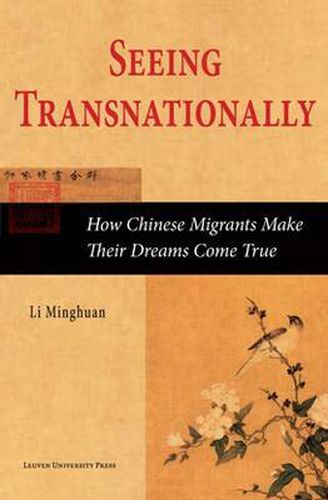Readings Newsletter
Become a Readings Member to make your shopping experience even easier.
Sign in or sign up for free!
You’re not far away from qualifying for FREE standard shipping within Australia
You’ve qualified for FREE standard shipping within Australia
The cart is loading…






Between the early nineteenth century and the 1930s, more than ten million Chinese workers were shipped abroad to the European outposts and colonies of the tropical world. This great wave of Chinese mobility drew to a halt in the early 1950s after the midcentury years of war and revolution. However, since 1978, when China’s reform policy lifted the ban on migration, Chinese subjects from the People’s Republic have been on the move again. This time, the movement has been directed largely toward Europe and the Western world itself. This volume of essays by Li Minghuan, an early new migrant-scholar herself, documents the extraordinary story of Chinese transnational migration. The book represents over two decades of untiring empirical field research, going where the migrants go-the Netherlands, France, Canada-and where they come from-Wenzhou in Zhejiang, Mingxi in Fujian-in order to observe, and to listen, with an unwaveringly sympathetic eye and ear, to what they, their families, their neighbours, their brokers, and their local officials have to say. Coupled with the historian’s craft of painstaking archival research, these village and community case studies not only cover an astounding geographical orbit of sending and receiving areas, but also a broad diversity and range of migrant types and situations both historical and contemporary, from illegal and refugee migration, to official labor export, to the migration of students and professionals.
$9.00 standard shipping within Australia
FREE standard shipping within Australia for orders over $100.00
Express & International shipping calculated at checkout
Between the early nineteenth century and the 1930s, more than ten million Chinese workers were shipped abroad to the European outposts and colonies of the tropical world. This great wave of Chinese mobility drew to a halt in the early 1950s after the midcentury years of war and revolution. However, since 1978, when China’s reform policy lifted the ban on migration, Chinese subjects from the People’s Republic have been on the move again. This time, the movement has been directed largely toward Europe and the Western world itself. This volume of essays by Li Minghuan, an early new migrant-scholar herself, documents the extraordinary story of Chinese transnational migration. The book represents over two decades of untiring empirical field research, going where the migrants go-the Netherlands, France, Canada-and where they come from-Wenzhou in Zhejiang, Mingxi in Fujian-in order to observe, and to listen, with an unwaveringly sympathetic eye and ear, to what they, their families, their neighbours, their brokers, and their local officials have to say. Coupled with the historian’s craft of painstaking archival research, these village and community case studies not only cover an astounding geographical orbit of sending and receiving areas, but also a broad diversity and range of migrant types and situations both historical and contemporary, from illegal and refugee migration, to official labor export, to the migration of students and professionals.